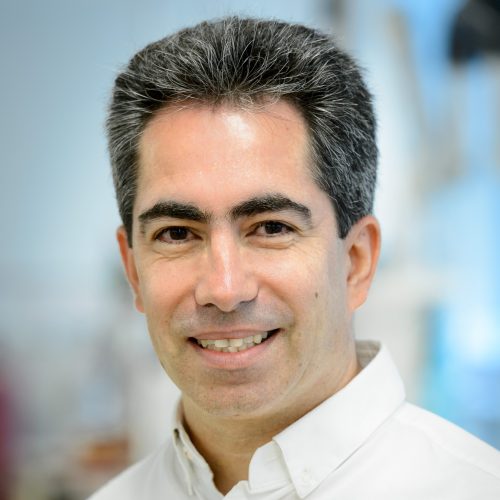
Professor
Office: CHBE 219
Email: fariborz.taghipour@ubc.ca
Website: light.chbe.ubc.ca
Research Summary
Artificial Photosynthesis, Solar Fuels, UV Photoreactors, Photo-Activated Sensors & Biosensors, Modeling of Chemical and Biochemical Reactors, Computational Fluid Dynamics (CFD)
Research interests + projects
Research interests
Hello! Welcome to my webpage at the Department of Chemical and Biological Engineering, University of British Columbia. Our research focuses on creating photochemical materials, technologies, and devices for energy and environmental applications. The broad impact of our work is demonstrated through intellectual property generation, technology transfer, innovative product development, and the establishment of a cleantech company benefiting people worldwide.
Specific research areas include:
Photo-activated Sensors & Biosensors: Chemical sensors and biosensors are an integral part of everyday life, enabling continuous monitoring of environmental conditions, health parameters, and industrial processes. They are essential components for AI, providing crucial data inputs that enhance the intelligence and functionality of automated systems. Our research focuses on innovating sensors for environmental monitoring and pioneering biosensors for health assessment. We advance the field of photo-activated sensing materials by optimizing their nanoscale size, morphology, and composition. Through innovative materials, image-based sensing technologies, and artificial intelligence, we specialize in developing biosensors for biofluid analysis and sensors for monitoring soil, water, and air quality.
Photoreactors for Water & Air Purification: Ultraviolet (UV) photonics, photoreactions, and photoreactors are crucial in various technologies and industries. We are developing novel materials and devices that utilize UV light-emitting diodes (UV-LEDs) and microplasma UV technology—the emerging stars in UV technology. Our primary focus is on advancing UV photolytic and photocatalytic reactors for water and air treatment.
Artificial Photosynthesis & Solar Fuels: Artificial photosynthesis involves capturing solar energy and converting it into chemical fuels. Our research aims to develop engineered solar fuel generators for the photocatalytic production of hydrogen and value-added chemicals. We design photoelectrochemical cells and multifunctional photocatalysts for fuel generation through water splitting and carbon dioxide conversion.
Computational Modeling of Chemical & Biological Systems: Computational fluid dynamics (CFD) plays a pivotal role in studying chemical and biological systems. We integrate fundamental physical models with CFD to create models of chemical and biological reactors for virtual prototyping and design optimization.
These research areas represent our commitment to advancing technologies aimed at tackling global challenges in energy, health, and the environment.
Scholarly and professional activities + affiliations
Advanced Materials and Process Engineering Laboratory
Selected publications + presentations
Wusiman M. Taghipour F. (2025) Solid-Phase Molecularly Imprinted Fluorescence Sensor for Lactate Measurement in Sweat, Nat. Microsyst. Nanoeng 10, 175
Taleghani, N., Taghipour F. (2024) Photo-induced metal-oxide biosensor for analysis of biofluids. Talanta 280, 126668.
Ghorbani G., Taghipour F. (2024) UV-activated chemiresistive gas sensor response curve analysis for the fast measurement of toxic gases; Sens Actuators B Chem. 419, 136396
Lachance R., Adeli B., Taghipour F. (2024) Enhanced Photocatalytic CO2 Reduction by Amine Functionalization of Graphitic Carbon Nitride, Sol. RRL. 2301003
Wusiman M., Taghipour, F. (2024) A Solid-Phase Fluorescence Sensor for Measuring Chemical Species in Water, Water Res. 249, 120972.
Mohaghegh Montazeri M, Taghipour, F. (2023) Virtual prototyping and characterization of a point-of-entry UV-LED water disinfection reactor with the synergic effect of radiation, hydrodynamics, and inactivation kinetics, Water Res. 230, 119581.
Wusiman M., Taghipour, F. (2022) Methods and Mechanisms of Gas Sensor Selectivity. Crit. Rev. Solid State Mater. Sci. 47, 416–435.
Lo, A.Y., Taghipour, F. (2022) Ordered Mesoporous Photocatalysts for CO2 Photoreduction. J. Mater. Chem. A. 9, 26430-26453.
Taleghani N., Taghipour F. (2021) Diagnosis of COVID-19 for controlling the pandemic: A review of the state-of-the-art. Biosens. Bioelectron. 147, 112830.
20+ granted and pending patents just in the past five years that are the basis of several commercial products; including: US10,293,072, US10,640,397, US10,829,394, US11,154,836, PCT/CA2018/050879, PCT/CA2020/050155, PCT/CA2020/050877, PCT/CA2020/051451, etc.